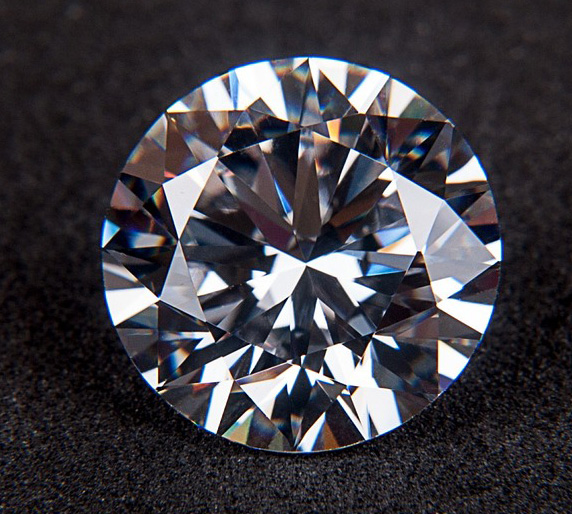What Are They?
You’ve probably hear of the four C’s when it comes to diamonds. Maybe you even know a couple of them or all of them. But exactly how do these four characteristics really define the value of a diamond? And is it a universal method or for just a certain type of diamond? Here’s a quick and easy guide to getting the 4 C’s right.

The 4C’s was a mnemonic device created by Robert Shipley, founder of the GIA, during the 1940’s. He used this to simplify the process of characterizing diamonds for his students. But it wasn’t just the students who benefited. His system became the universally recognized standard for jewelers to describe the quality of a diamond and today, any diamond buyer should familiarize themselves with it.
Color
When it comes to white diamonds, the “color” refers to how white or clear the stone is. Diamonds are graded on a color scale from D (colorless) to Z (light yellow or brown) There are 23 grades in between D and Z so variety abounds.. This only applies to white diamonds. Colored diamonds, like pink, green, or blue are graded differently.
Cut
This is possibly the most important C as it has a huge influence on the stone’s beauty and sparkle and the better the cut, the higher the price. It is based on the diamond’s facets, angles, brilliance, and scintillation. These characteristics combine to create the sparkle and directly impact a diamond’s ability to refract the light, along with its overall aesthetic appeal. There are six levels to determine the quality of a stone’s cut: Ideal, Excellent, Very Good, Good, Fair and Poor.
Clarity
Clarity is about the flaws in the diamond and just about every diamond has them. It refers to the presence of internal or external flaws, also called inclusions, in the diamond which decrease the stone’s and brilliance. Minerals or uncrystallized carbon create these inclusions and the more a stone has, the less valuable it is. Clarity is expressed in a range from Flawless (no inclusions or blemishes detectable at 10x magnification) to Included (inclusions so obvious they are seen by the naked eye). Most diamonds are slightly included (SI) to very slightly included (VS) range. A flawless diamond is extremely rare and prohibitively expensive.

Carat
This is the most well known of the four Cs. When you look at diamond jewelry to buy online, you’ll see the carat weight always mentioned. You’ll often not see clarity mentioned. The carat weight of a diamond is just that: the weight, not the size of the stone. So, a diamond can appear smaller than another, yet have a higher carat weight. A 1 ct diamond weights 200 milligrams.
These four classifications of diamond quality are what in total determine the value of a stone. Unfortunately, many indiscriminate buyers make purchases based entirely on the carat weight. “Well, a 1 ct diamond’ s better than a .5ct, right? The bigger, the better.” No. Always remember a well cut, smaller diamond with good clarity and color is valued higher than a larger stone poorly cut with lots of inclusions.
For more diamond facts check out our series Decoding Diamonds.

